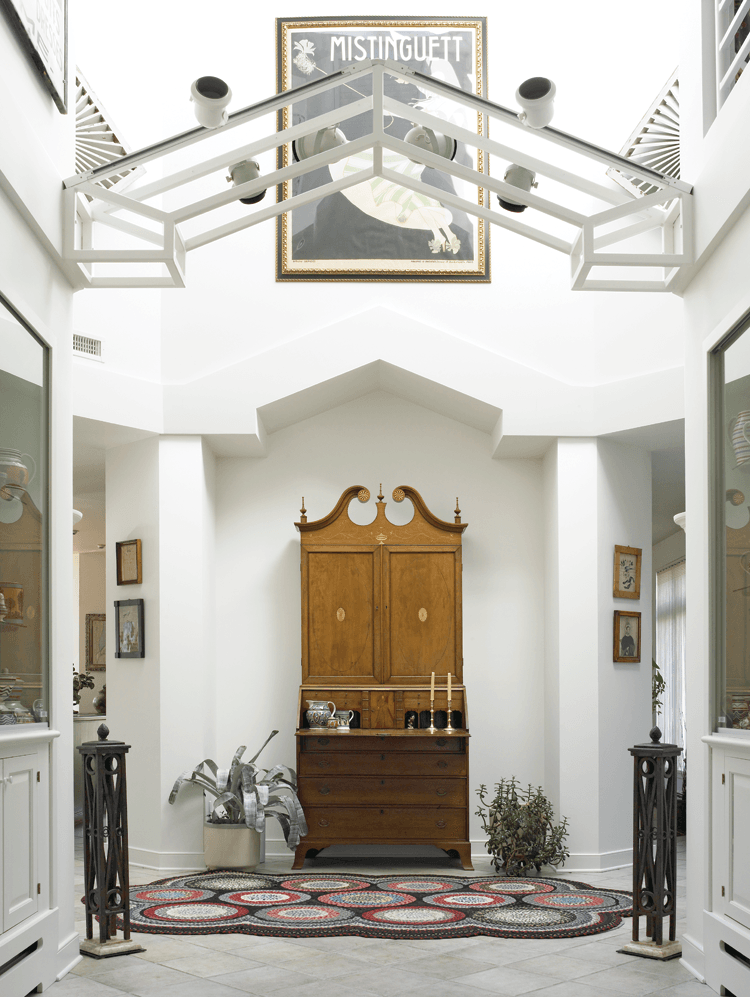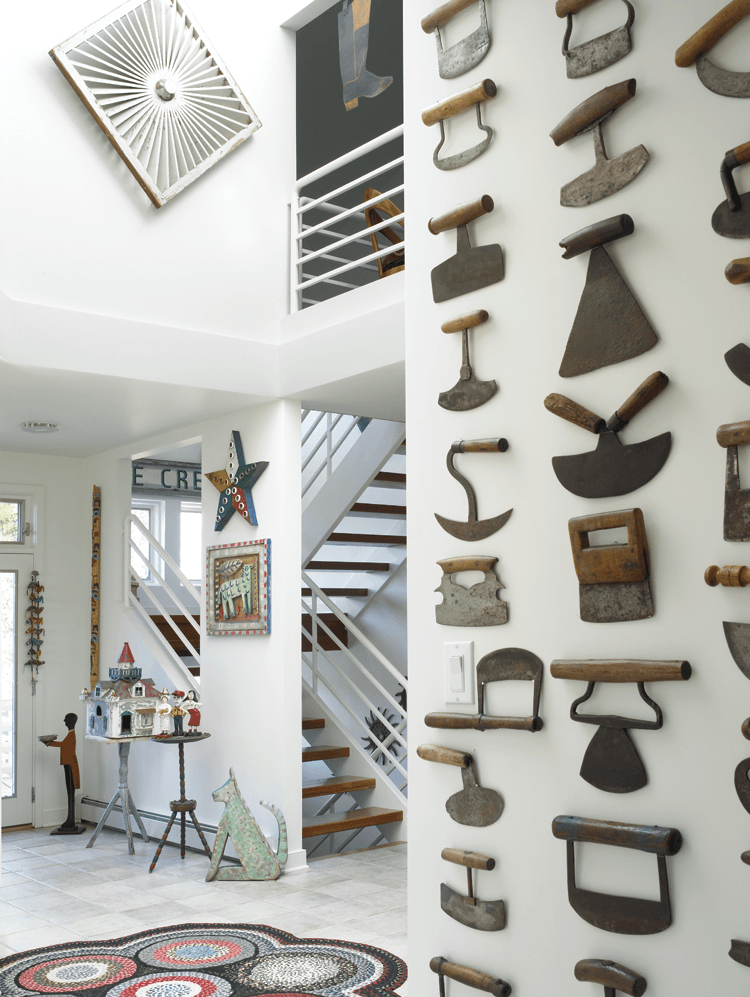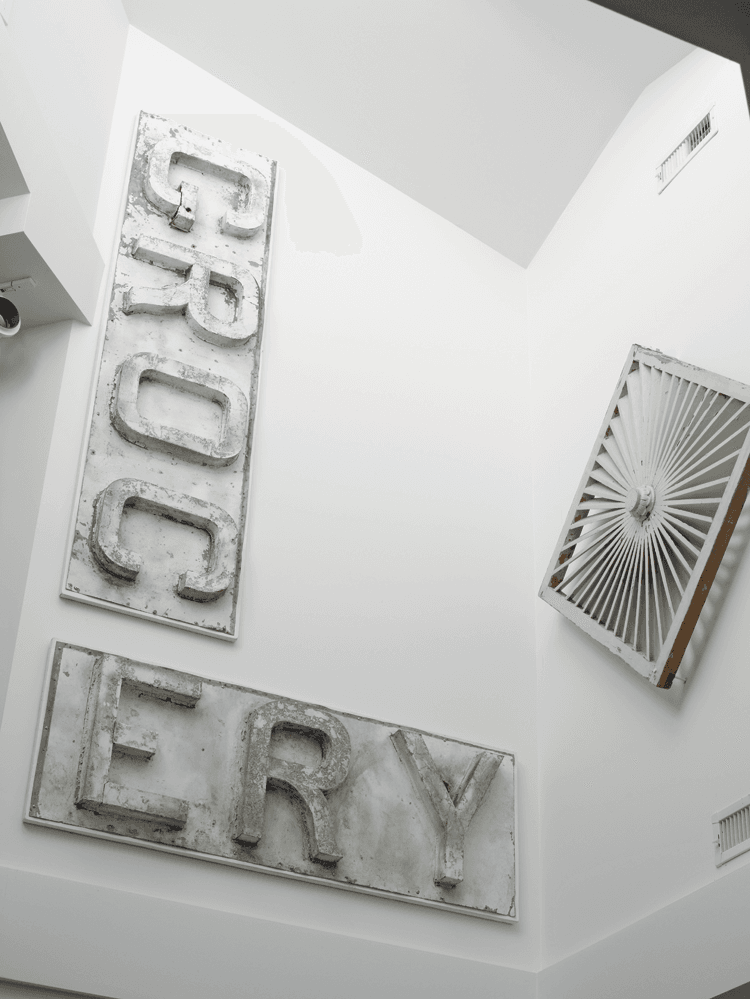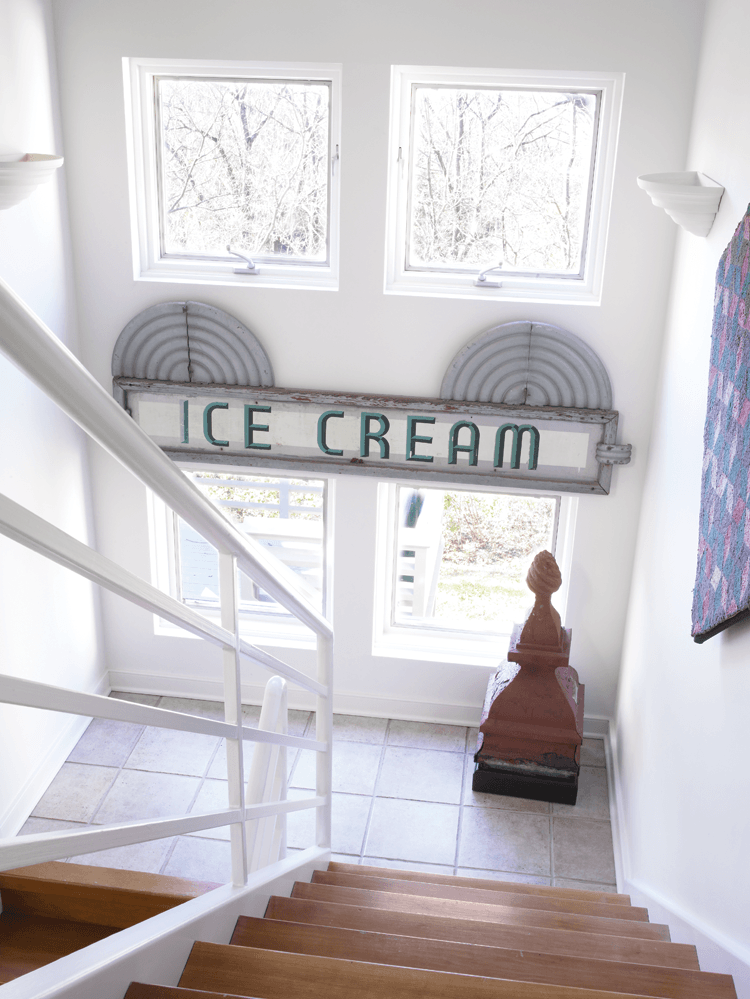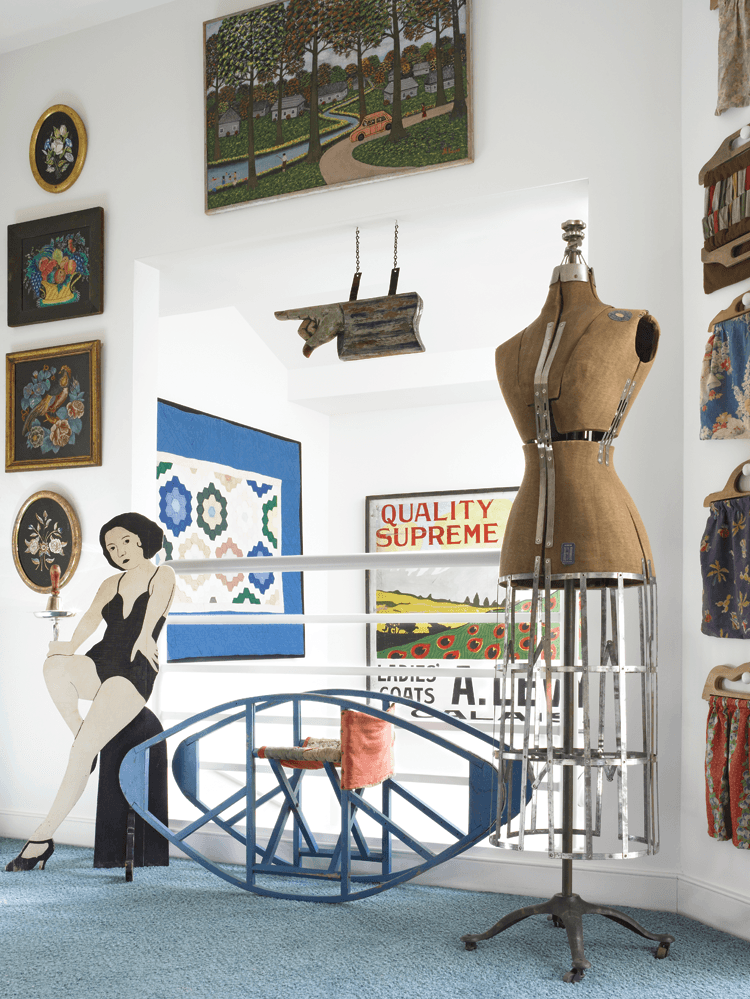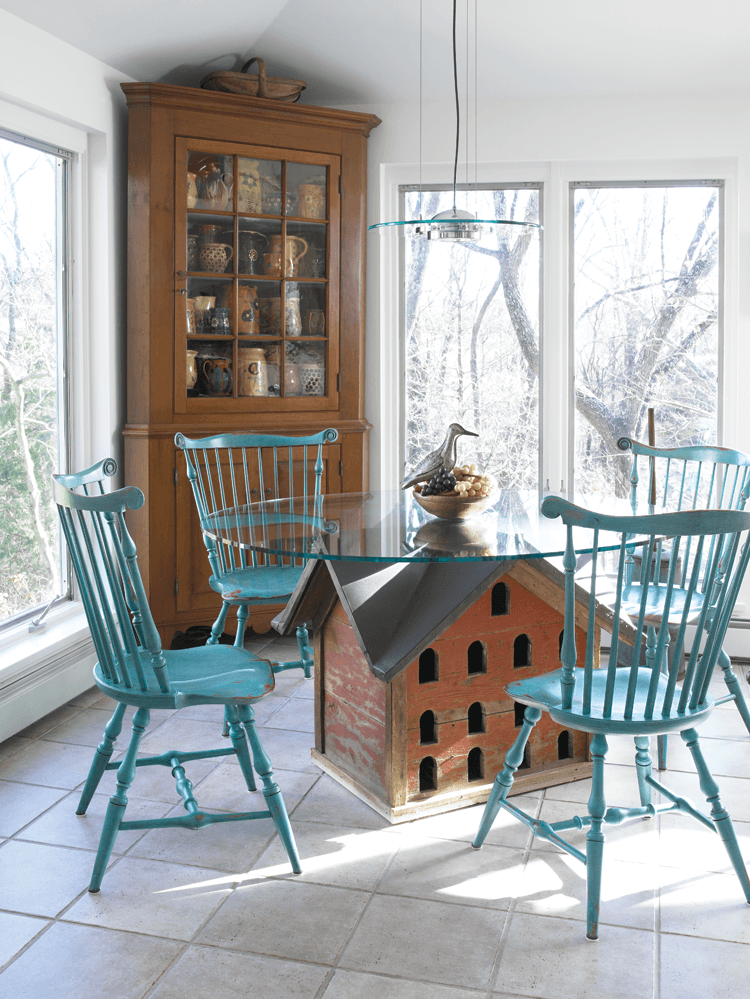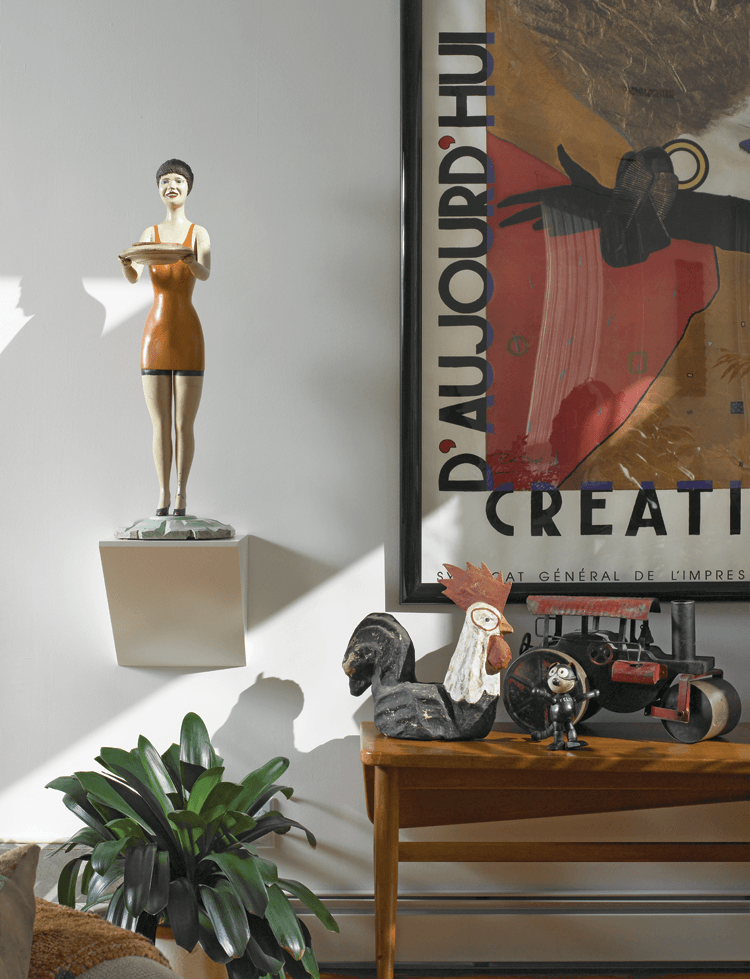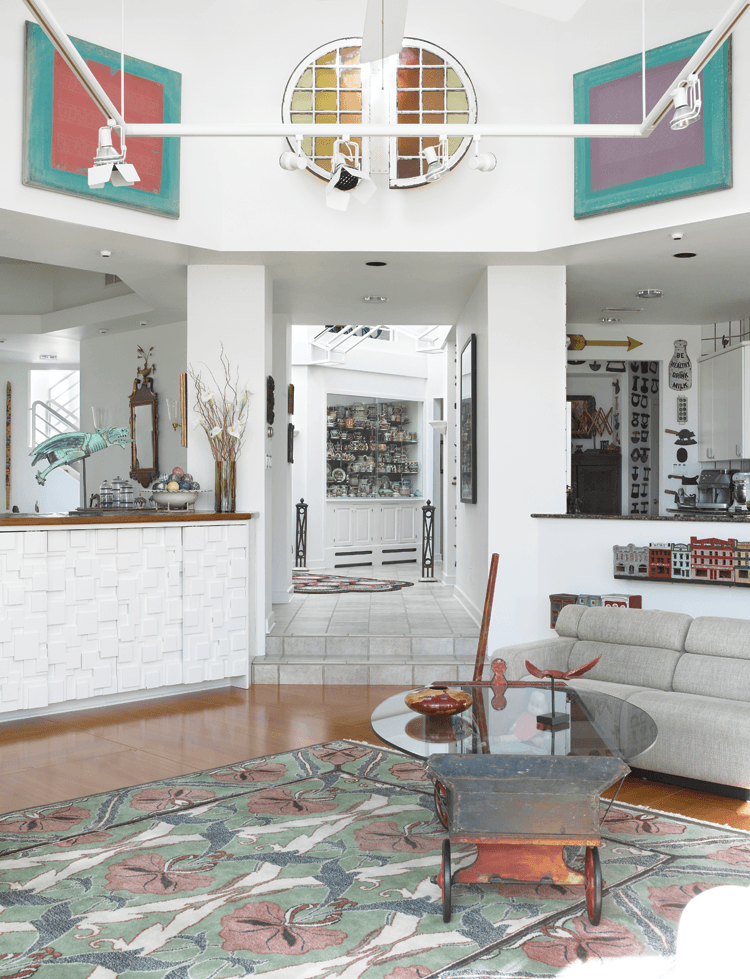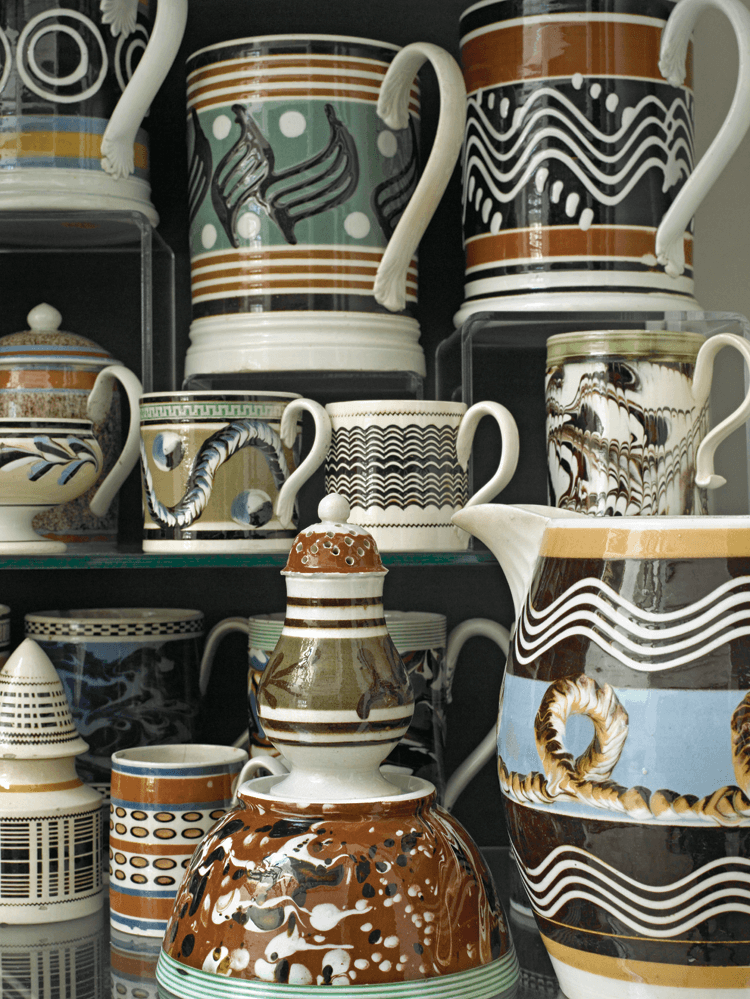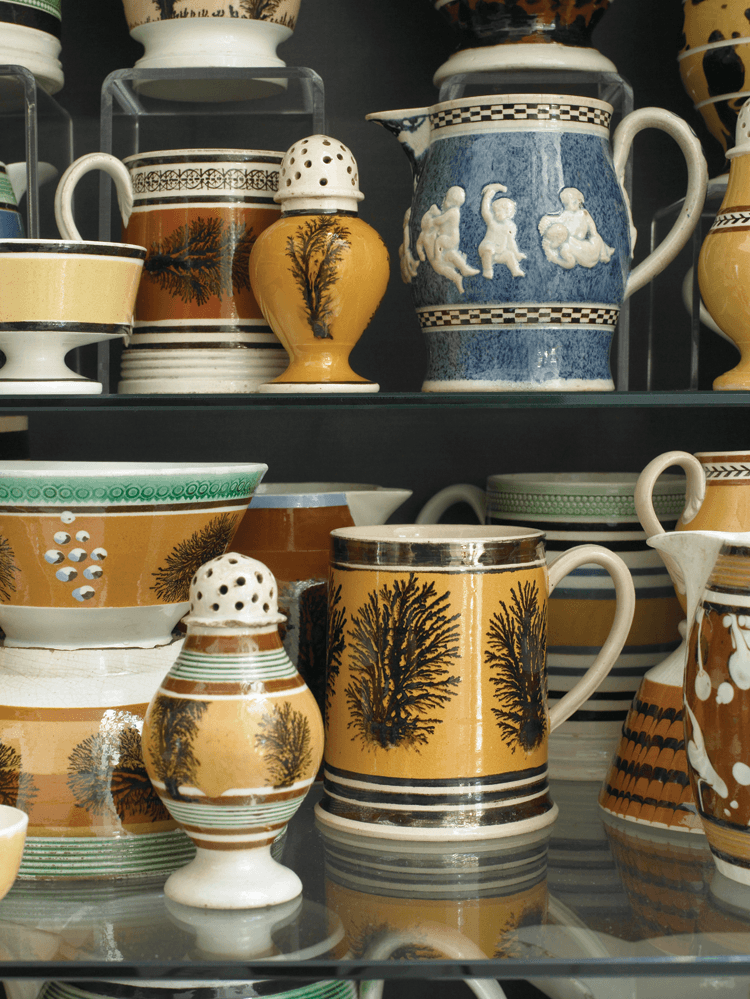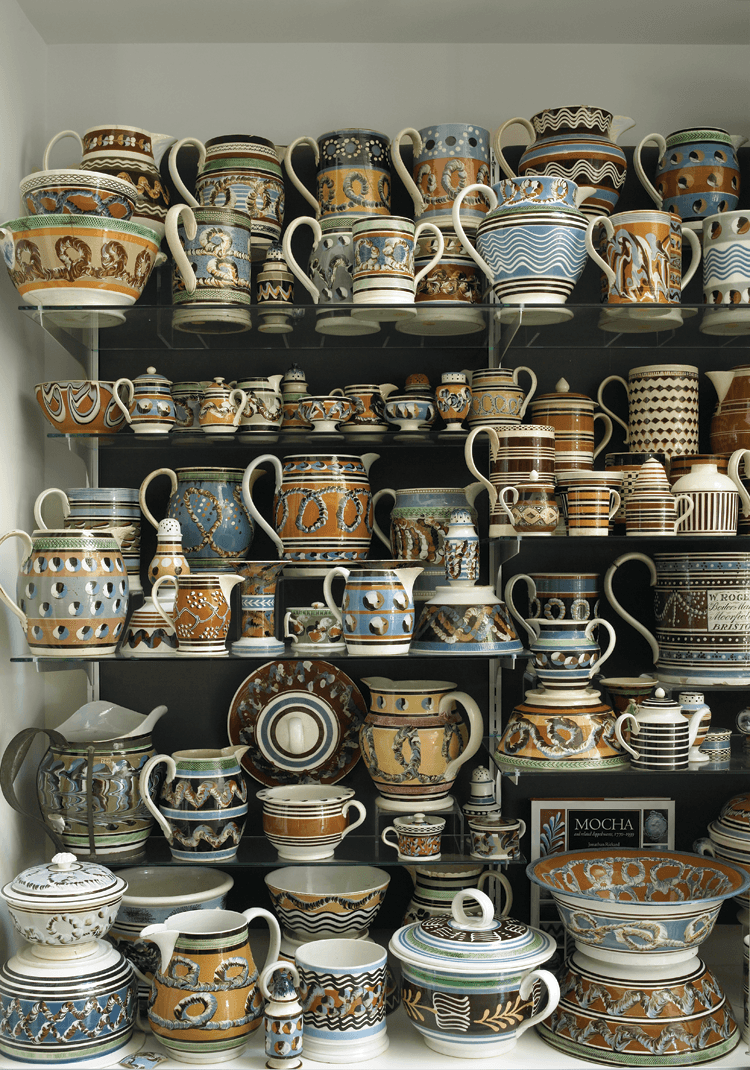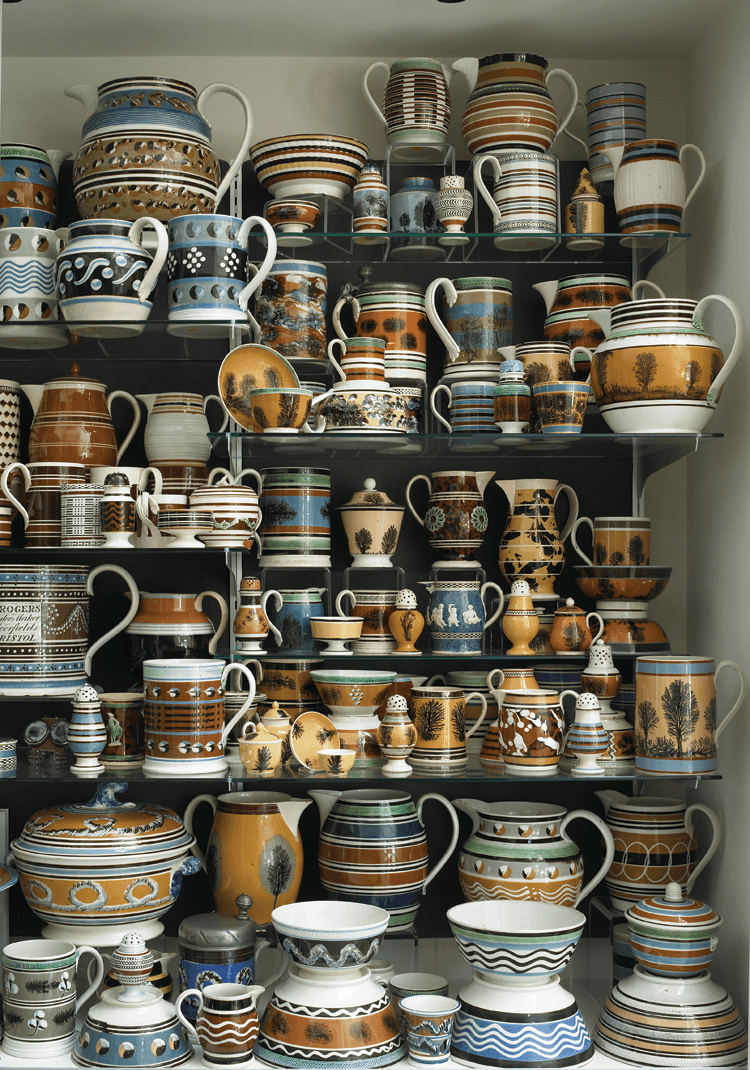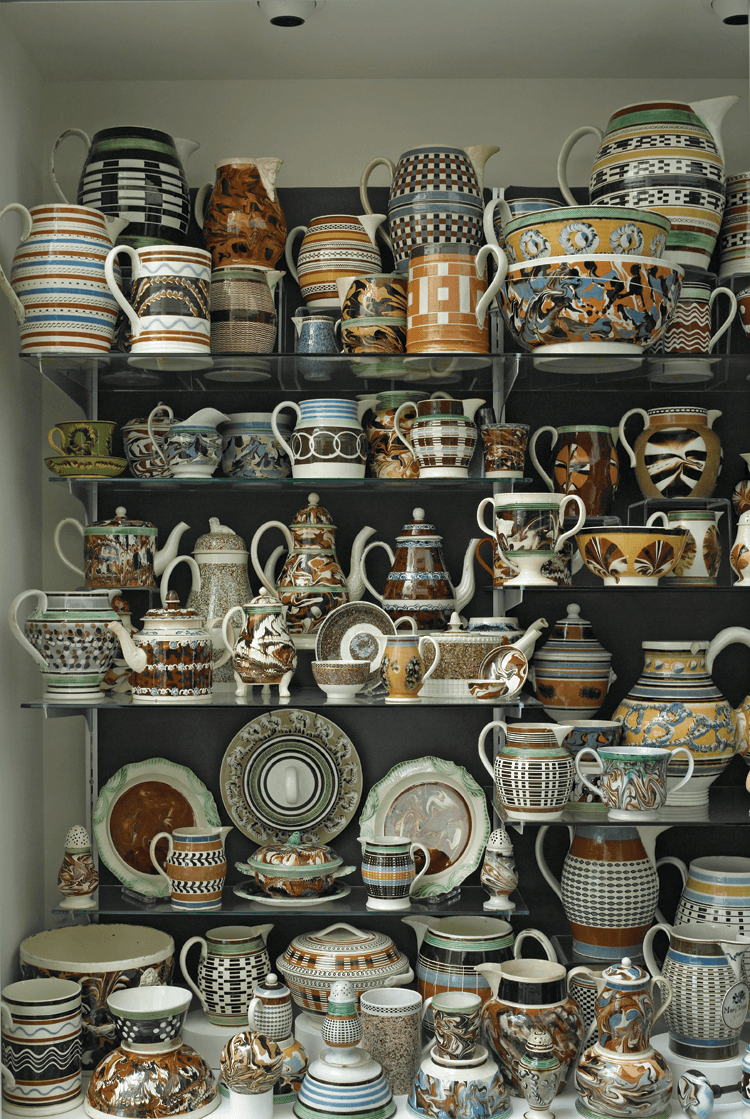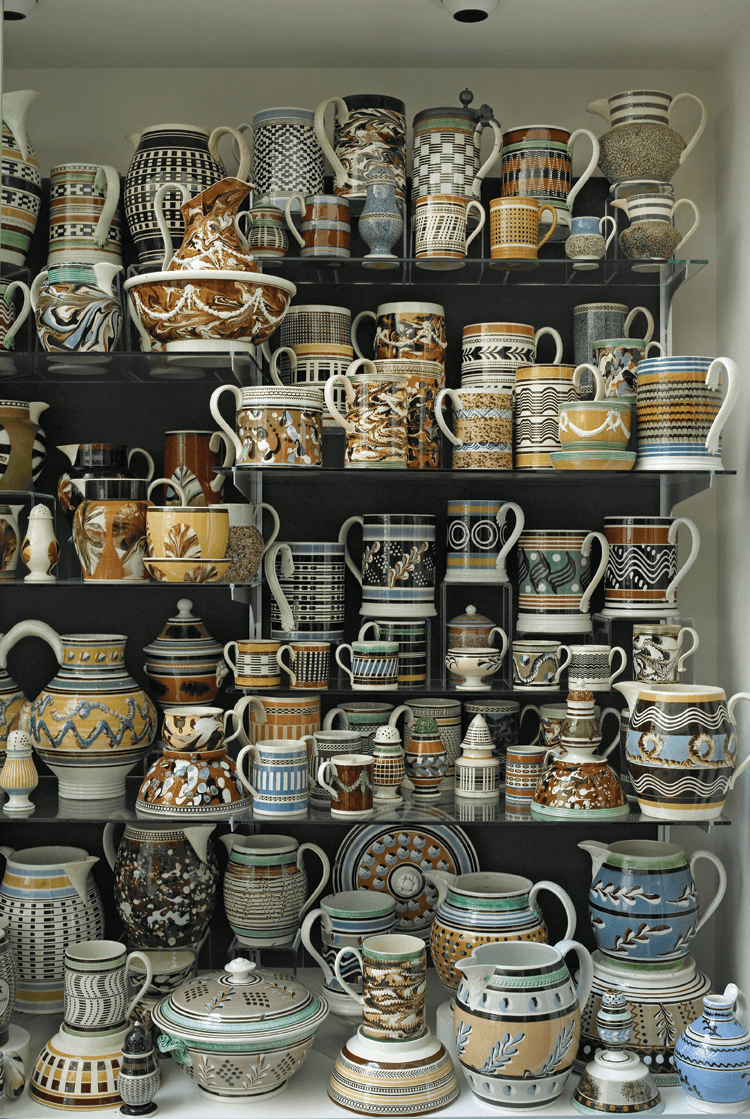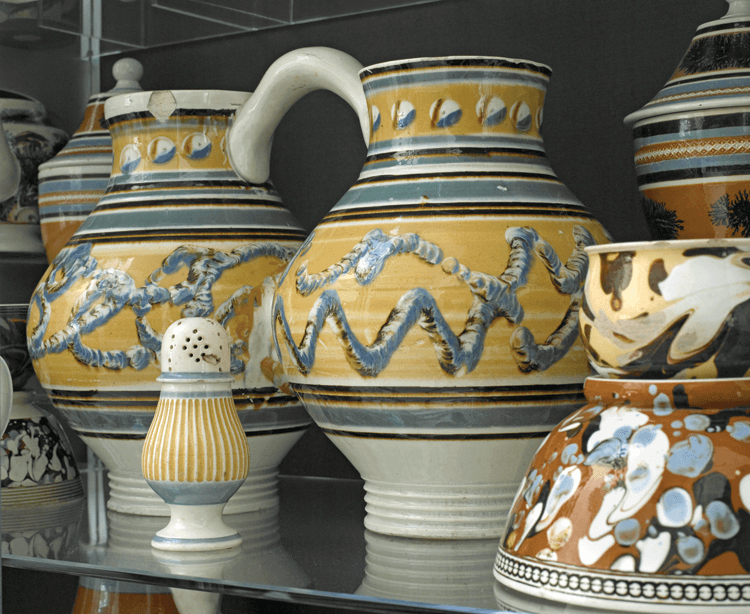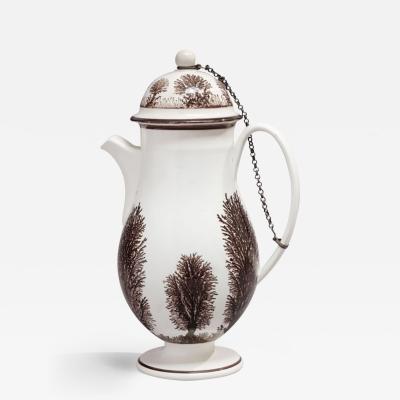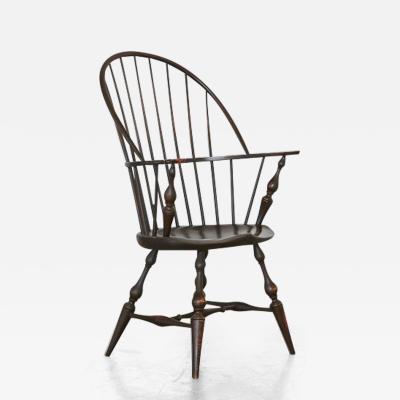Dipped in History: A Collection of Traditional and Modern Furnishings
This archive article was originally published in the Autumn 2014 issue of Antiques & Fine Art magazine.
My wife introduced me to the concept of balance in a room,” says the husband of his interior-designer spouse, adding, “That does not imply a sense of sameness or symmetry in the house—there’s a lot of variation in time periods and styles and one component does not overpower another.”
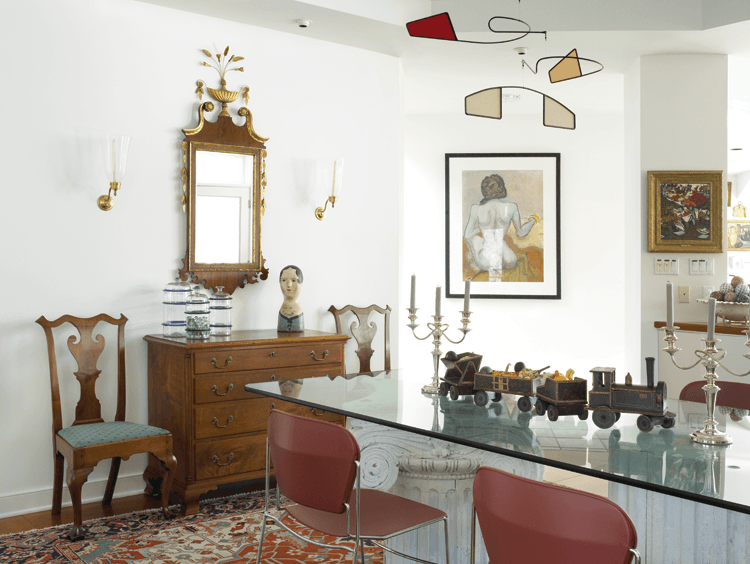
- Two of a set of four Pennsylvania Savery-type side chairs, the style of which is associated with the chairmaker William Savery (1721–1787) of Philadelphia, were acquired from C. L. Prickett, and were previously owned by Israel Sack, Inc. The couple purchased the Chester County, Pennsylvania, chest-of-drawers from H. and R. Sandor. A New York Federal looking glass often reflects the diners seated at the glass top-table, which is supported by a Greek revival column’s plinth and capital from a bank building in Milwaukee. The combination of formal furniture and molded plastic and chrome office chairs is in keeping with the comfort the couple feel in combining time periods.
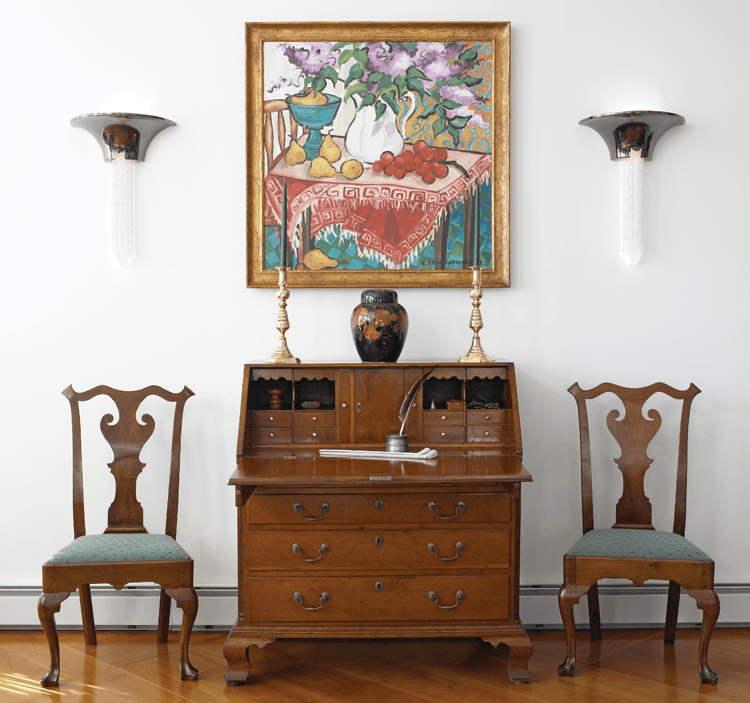
- The couple found the Pennsylvania furniture through antiques dealer C. L. Prickett. The Moorcroft pomegranate ginger jar, signed Wm. Moorcraft, is flanked by nineteenth-century brass candlesticks and Art Deco sconces purchased from Rago Auctions. The wife was attracted to the 1993 painting by Blue Hill, Maine, artist Heidi Prior Gerquest, because its bold, colorful imagery complements the tones of the furniture.
This approach toward furnishing their present home and guiding their collecting has its origins in the 1960s, when the couple, newly married, began purchasing an item here and there, each aesthetically in line with their developing sense of design. At that point they didn’t think of themselves as collectors, but were simply filling their residence with attractive items they’d find at dealers’ shops or small antiques shows while driving around suburban Philadelphia. They bought what they liked. “For our first purchase, we pooled together our money—all of four dollars—,” recalls the wife, “to buy a painted ironstone covered soap dish.” Shortly after the husband completed medical school in 1967, their first major acquisition was a $400 New England candlestand purchased from H. and R. Sandor. “We bought it over time,” they recall. “Some dealers were anxious to help young collectors and were willing to work with us,” adds the husband, “so they were among the dealers we most often patronized.”
The couple’s education in antiques began in earnest when they enrolled in continuing education classes taught by journalist and later Maine Antique Digest senior editor, Lita Solis-Cohen. The husband and wife apparently struck a chord with Solis-Cohen because she took them under her wing and introduced them to many antiques dealers in the Delaware Valley and beyond. Soon the couple found themselves focusing on early American furniture and decorative arts: they had become more serious collectors. Their interest intensified when the husband’s military assignment stationed the couple in Newport News, Virginia. Being so close to Colonial Williamsburg, the wife became a docent, the first of a number of similar guiding, interpretive, and teaching positions at other museums. For her, this “job” was a priceless educational opportunity.
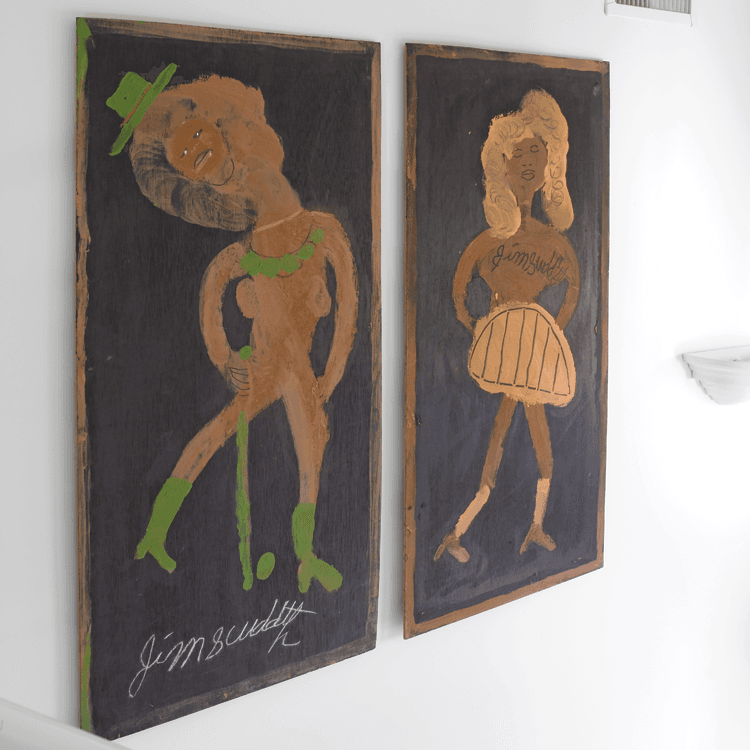
- Jimmy Lee Sudduth (1910–2007) was a self-taught African-American artist from Alabama. Known for “painting” in various colored muds, enhanced with natural and man-made materials such as coffee grounds, berries, nut shells, and grease, this outsider artist worked with his fingers, most commonly on plywood. His whimsical work has been featured in a number of museum exhibitions since the 1970s, and in 2005, the Montgomery Museum organized a one-man show and catalogue. The American Folk Art Museum and the Smithsonian Institution are among the numerous museums that house his work.
When it was time to set up his practice as a physician, the husband and wife settled in historic Bucks County, Pennsylvania. They purchased a nineteenth-century farmhouse and acquired additional period furniture and accessories to complement the period structure. In addition to prominent antiques dealers in the New Hope region such as Sandor and C. L. Prickett, the couple patronized Chester County dealers Phillip Bradley and Herbert Schiffer, among others, as well as antiques shows in Philadelphia, New York, and New England. They also frequently visited Winterthur, the Philadelphia Museum of Art, and other major collections to learn and admire, returning to Williamsburg countless times.
With a growing family, the couple added a “family” room onto their farmhouse. Rather than furnish it with more early Americana, they began filling it with a mix of modern seating, complemented by nineteenth- and twentieth-century folk art in the overall context of twentieth-century architectural details. They began to acquire new items at smaller venues throughout the Northeast. Says the wife, “That’s when I started liking the eclectic, nutty things.” The material couldn’t really all “fit” in the early house even after building a new wing, so, in 1992, they sold their farmhouse and a portion of their collections and built a contemporary house, which the wife helped design. “It was liberating having blank white walls and big spaces to fill again,” says the husband. “Instead of having a designated space in the house for modern material, we mixed the contemporary and antiques together.” Adds the wife, “I love the colors and funky aesthetic of modern design combined with formal American period furniture.”
|
|
|
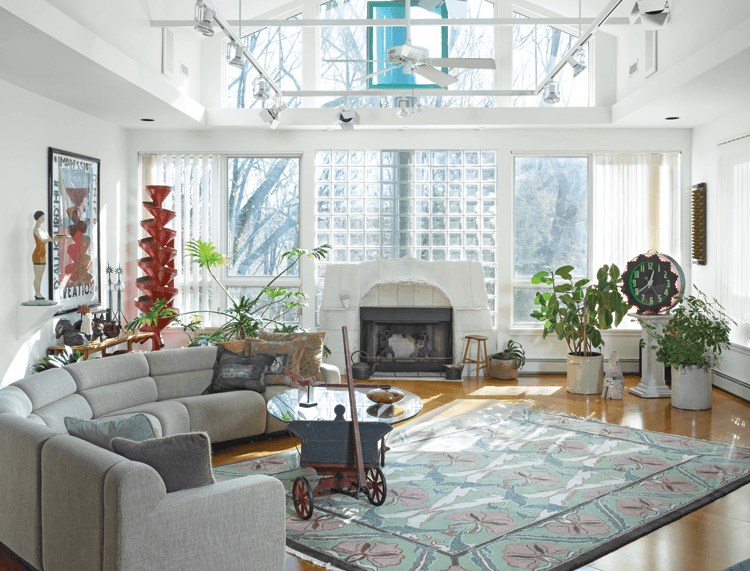
- The peak of the living room ceiling shares the same profile as that of the atrium, which connects the front and back of the house visually. Glass bricks back the fireplace and add texture to the glass window wall. The fireplace surround, with hand-formed porcelain slabs and torn blocks of unglazed porcelain, is by contemporary artist/potter Paula Winokur, whose work is in the Philadelphia Museum of Art and elsewhere. A translucent Scalamandre silk screen, one of three in the room, creates the effect of stained glass. To the right is an early twentieth-century diner clock on a pedestal; opposite is a standing red sculpture that in reality is a painted metal grain chute that the couple purchased at the New York Pier Antique Show because of its visual impact. The rug has a William Morris style design, and the coffee table is a painted goat cart with modern glass top.
Years before the couple began melding time periods and styles of interior design within their present home, they were drawn to a particular English pottery that does just that in its marriage of traditional forms with strikingly modern-appearing geometric and multi-colored decoration that dovetails visually with contemporary design. This pottery was mochaware, a thinly potted English cream-colored ware associated with “dipped” decoration (first produced in the 1770s) and by the 1780s and 1790s, with an extensive range of dipped and slip (slurry of clay) decorative devices. Examples sought by collectors range well into the mid-nineteenth century. The couple acquired their first pieces of mocha on a trip to the Kent Antiques Show in Connecticut in the 1970s and thereupon resolved to be serious collectors, attracted by the forms, colors, and seemingly endless combinations of designs. It turns out that these two pieces they acquired at the Kent show were rare examples and both remain in their collection.
Shortly after their decision to collect mochaware, they met dealer and collector Leonard Balish at the Philadelphia Antiques Show and continued to work with him through the years until his passing in 2001. Other important sources from whom they purchased include, among others, Bea Cohen, Schorr and Dobinsky, Bill Lewan, Judy and Bill Campbell, Bill King, Greg Ellington, Mr. and Mrs. Jerome Blum, Greg Kramer, and William Kurau, as well as at auctions. The Wilton Antiques Show was where they first met Jonathan Rickard, the authority on mocha: the three remain friends and colleagues. “A number of examples in our collection were in Jonathan’s book on mocha,” says the wife, adding, “Some were once his and others were in other private collections.”
MOCHAWARE
Pale-bodied earthenware (pearlware and creamware) ornamented with slip-decoration was produced in England as early as the 1770s. By the 1790s the term “mocha” was first documented and initially referred to the dendritic, or seaweed-like, designs, which had been used since the 1780s. Part of the family of dipped wares, the term mocha has come to be associated with pale-bodied, thinly-walled pearlwares and creamwares exhibiting both dipped and slipped decoration. A variety of techniques were used to apply one or multiple layers of colored slip (a slurry of liquid clays) to the air-dried clay body of the pot before firing in a kiln. Resulting in a seemingly endless range of designs, techniques employed include dipping, pouring, banding, trailing, marbling (joggling), stirring, combing, or other means of manipulating the slip before it had completely dried and set on the pot. By mounting the pot on a horizontal lathe, the potter could also score linear patterns or mill away repeating geometric designs by a procedure called engine-turning. Further adornment might include rouletting, sprigging (applied press-molded white clay elements), or adding crushed bits of waste creamware.
The key reference book on the subject is Mocha and Related Dipped Wares, 1770–1939 by collector, researcher, historian, and archeologist Jonathan Rickard. The leading scholar and craftsman on the techniques used to create mocha’s designs and patterns is Don Carpentier, founder of Historic Eastfield Foundation. Their efforts to demystify the history of mocha and slip-decorating techniques have proven essential to anyone interested in the material.
Though mochaware was mass-produced, the couple has unique and rare examples (such as a double jug), as well as pieces of rare design and color/design combinations. Though they now own several hundred examples, they are still acquiring. Says the couple jointly, “We have been fortunate to have experienced the growth of knowledge and discovery in the field, both first hand and through the scholarship of others, which has further fueled our enthusiasm for these wares.”
Originally published in the Autumn 2014 issue of Antiques & Fine Art magazine, in tandem with InCollect.com. The digitized version of the entire issue is available on www.afamag.com.















